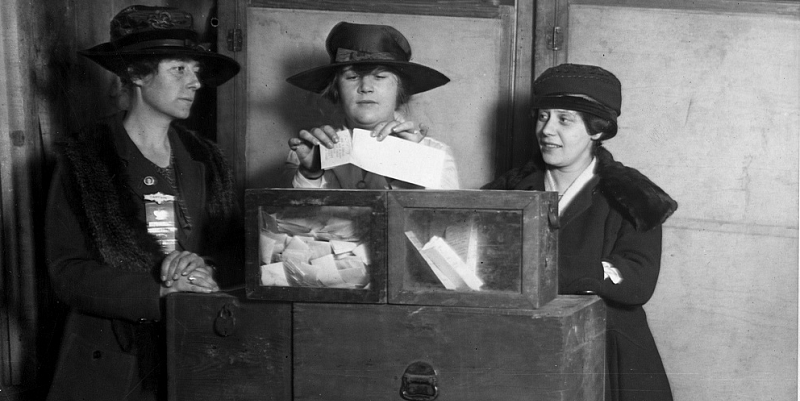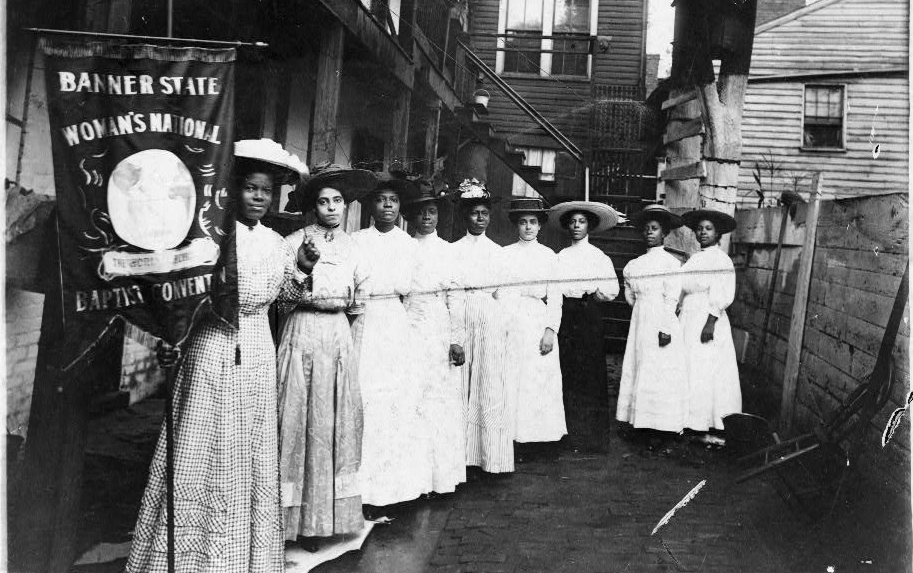
On Aug. 26, 1920, nearly a century after the women’s suffrage movement began, U.S. Secretary of State Bainbridge Colby signed a proclamation officially certifying the recently ratified 19th Amendment and granting women the right to vote. In that moment, nearly 100 years’ worth of persistence, activism and strategy came to fruition. Solidified in the U.S. Constitution for the first time was the declaration that the right to vote would not be denied on the account of sex, though the vote for millions of women would continue to be denied on the basis of race and ethnicity in the decades to come.
We commemorate Women’s Equality Day on Aug. 26 as the anniversary of women gaining the right to vote, but it also serves as a reminder of the ongoing fight to ensure that voting rights and equal rights are secured for all. Moreover, it is worth recognizing that women’s suffrage is just one rung on the ladder to women’s equality. In order to fully participate in our society and have the power of self-determination, women need not only the ability to vote, but also the ability to thrive as equitable members of the U.S. economy.
Nonetheless, women continue to face barriers ‒ such as pay inequities, undervalued work, overrepresentation in low-paying jobs and lack of a supportive care infrastructure ‒ that prevent them from fully participating in our economy and workforce. Even now, women make roughly 82 cents compared to each dollar earned by non-Hispanic white men. Among Black women this figure is only 63 cents, among Hispanic women it’s 55 cents, and among Asian women it’s 87 cents.
Women’s Bureau analyses confirm that most of these gaps cannot be explained by differences in men’s and women’s work histories, work hours, job characteristics or occupational distribution. The devaluation of care work and service work dominated by women, discrimination, inequitable caregiving obligations, and lack of access to paid family and medical leave are just a few of the factors that make this gap persist.

The COVID-19 pandemic brought to the foreground the political, social and economic inequities American women, particularly women of color, face daily in the U.S. It revealed that our economy has been propped up on the undervalued labor of women and workers of color for generations and that structural sexism and racism are still built into the scaffolding of our economy. The pandemic also showed that access to quality and affordable childcare, homecare and paid leave are crucial to the retention and long-term development of women in the workforce.
We have a once-in-a-generation opportunity to transform policies and practices in ways that would shift the experience of American women and workers of color. Through clear guidance, strategic investments, and partnerships with state and local organizations, we have a window of opportunity to break the cycle of gender and racial disparity in our economy. The American Rescue Plan Act, the Bipartisan Infrastructure Deal and the Build Back Better agenda all include crucial resources and commitments for job creation and building the care infrastructure our country lacks.
Under the Biden-Harris administration's Build Back Better agenda, no middle-class family will pay more than 7% of their income for high-quality child care up to age 5, and the most vulnerable families won’t pay anything, saving the average family $14,800 per year. Additionally, the American Rescue Plan Act increased the Child Tax Credit and extended it to nearly 40 million households. The administration is also committed to securing 12 weeks of paid family and medical leave to help reduce wage loss when taking time to care.
The Women’s Bureau is working to accomplish three main goals:
- more women and workers of color in pipelines to good jobs, including in nontraditional occupations;
- less caregiving wage and employment penalties; and
- less pay discrimination and other gender-based discrimination, including sexual harassment and discrimination based on sexual orientation, gender identity or pregnancy.
To achieve these goals we must have increased access to paid leave, workplace flexibilities and fair scheduling practices, as well as ensure child, elder and disability care is accessible and affordable.
This Women’s Equality Day, we must harness that same energy and spirit that drove the suffragists who fought for decades to earn the right to vote. If we are serious about ending gender and racial disparities in our economy, investing in stronger care infrastructure and equitable policies that make work work for the most vulnerable populations is our bridge to build back better. Let’s come together to make transformative and sustainable change that will finally make our economy work for all.
Wendy Chun-Hoon is the director of the U.S. Department of Labor’s Women’s Bureau. Follow the Women’s Bureau on Twitter at @WB_DOL.

 U.S. Department of Labor Blog
U.S. Department of Labor Blog